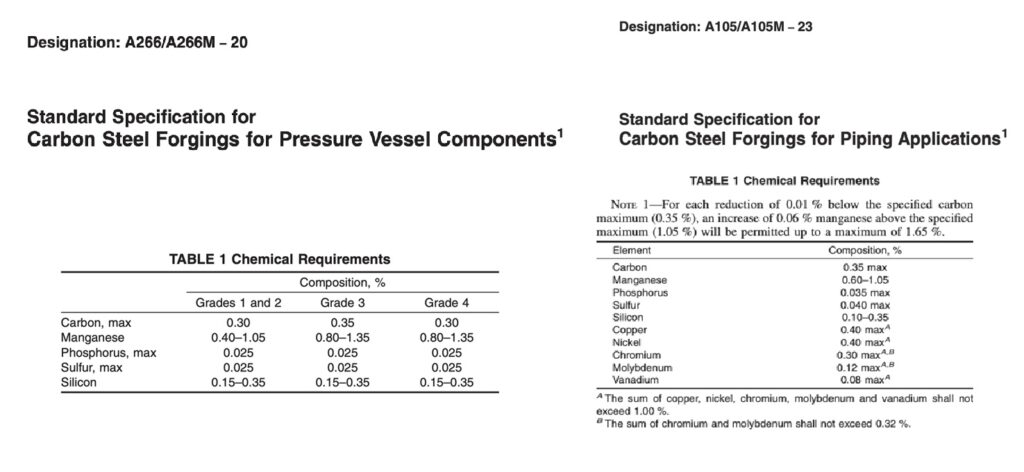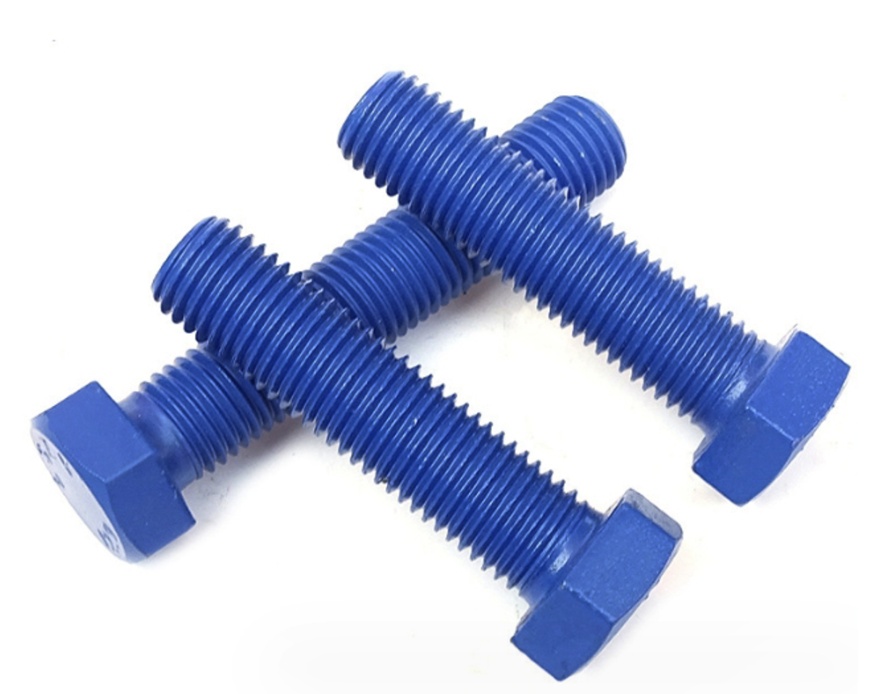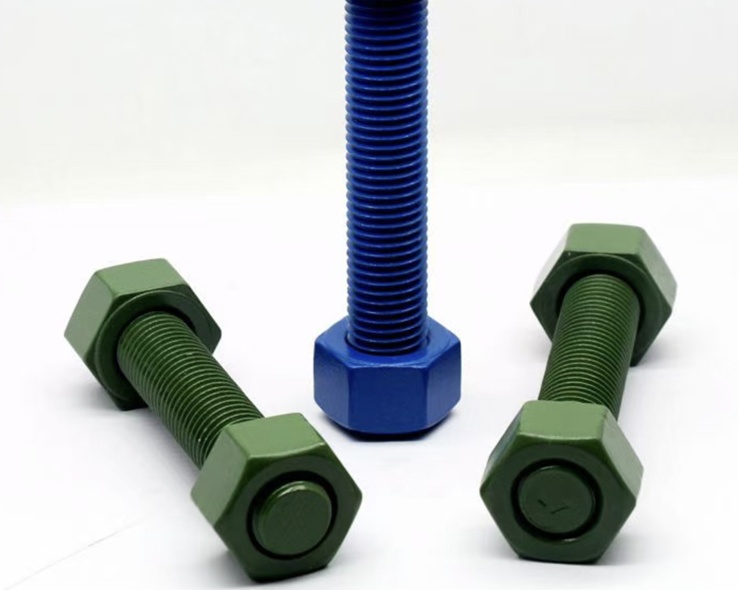SA 266 Grade 2 VS ASME SA105 Material Comparison
Both ASME SA105 and ASME SA266 are the most common grade for forgings . Both of these are carbon steel grades used in various high-pressure applications, but they have distinct properties and uses. In this page,you would find the differences between ASME SA105 and ASME SA266 to help you make the right choice for your project.
1. Material Composition
- ASTM A105: ASME SA105 is a carbon steel specification used for manufacturing flanges, fittings, and valves. This steel grade typically consists of carbon, manganese, phosphorus, sulfur, and a controlled amount of silicon. It is designed for use in piping systems that operate under high-temperature conditions (up to approximately 500°F or 260°C).
- ASME SA266 grade 2: SA-266 Cl.2 is under Section VIII Div.1. a carbon-manganese steel used specifically for forging components like flanges, fittings, and other pressure vessel parts. It includes higher carbon content and, depending on the grade, may include alloying elements like chromium or molybdenum for improved performance at elevated temperatures.
| Grade | C | Mn | P | S | Si | Cu | Ni | Cr | Mo | V |
| SA105 | ≤0.35 | 0.60-1.05 | ≤0.035 | ≤0.040 | 0.10-0.35 | ≤0.40 | ≤0.40 | ≤0.30 | ≤0.12 | ≤0.08 |
| SA266 Gr.1 and 2 | ≤0.30 | 0.40-1.05 | ≤0.025 | ≤0.025 | 0.15-0.35 | – | – | – | – | – |
| SA266 Gr.3- | ≤0.35 | 0.80-1.05 | ≤0.025 | ≤0.025 | 0.15-0.35 | – | – | – | – | – |
| SA266 Gr.4 | ≤0.30 | 0.80-1.05 | ≤0.025 | ≤0.025 | 0.15-0.35 | – | – | – | – | – |
2. Temperature and Pressure Resistance
- ASME SA105: This material is well-suited for use in systems that experience moderate pressure and temperature conditions. ASME SA105 components can withstand temperatures up to about 800°F (427°C), making it perfect for general industrial use in environments like chemical plants and refineries where moderate temperature and pressure are present.
- ASME SA266 grade 2 : In contrast, ASME SA266 is designed to endure significantly higher temperatures and pressures, making it ideal for heavy-duty applications such as those found in gas turbines, pressure vessels, and high-temperature piping systems. It offers better heat resistance and strength at elevated temperatures than ASME SA105, particularly in applications requiring temperatures over 1000°F (538°C).
3. Mechanical Properties
- ASME SA105: ASME SA105 steel offers moderate tensile strength and hardness. It is suitable for applications where the mechanical demands are not too extreme, but reliability is still key. This material typically provides good machinability and weldability, allowing for easy fabrication of flanged joints and valves.
- ASME SA266: ASME SA266 offers superior mechanical properties, including high strength and greater resistance to thermal fatigue. Its higher carbon content and alloying elements enhance its performance in extreme conditions, providing better stress resistance, creep strength, and overall durability in high-temperature environments.
4. Applications
- ASME SA105: ASME SA105 is widely used in the production of flanges, valves, and fittings in industries such as oil and gas, chemical processing, and water treatment. It is suitable for moderate-pressure systems and is often used in piping systems operating at temperatures up to 800°F.
- ASME SA266: SA266 grade 2 is typically used in more critical, high-temperature applications. These include components for power plants, turbines, and high-pressure reactors. Its superior high-temperature and high-pressure resistance make it an ideal choice for applications in industries such as aerospace, petrochemical, and energy generation.
5. Weldability and Fabrication
- ASME SA105: ASME SA105 is generally easier to weld and fabricate than SA266. It provides good results in applications where welding is required, ensuring secure and leak-proof joints in flanged systems.
- ASME SA266: ASME SA266 Gr 2 , being a higher-strength alloy with more complex elements, may be more challenging to weld compared to SA105. Proper welding procedures and pre-heat treatments are essential to prevent issues like cracking, especially in high-temperature applications.
How to choose?
- Choose SA105 for standard piping systems requiring cost-effective, moderate-strength carbon steel forgings.
- Choose SA266 grade 2 for high-pressure vessels, nuclear components, or cryogenic applications where superior strength, toughness, and rigorous testing are critical.


